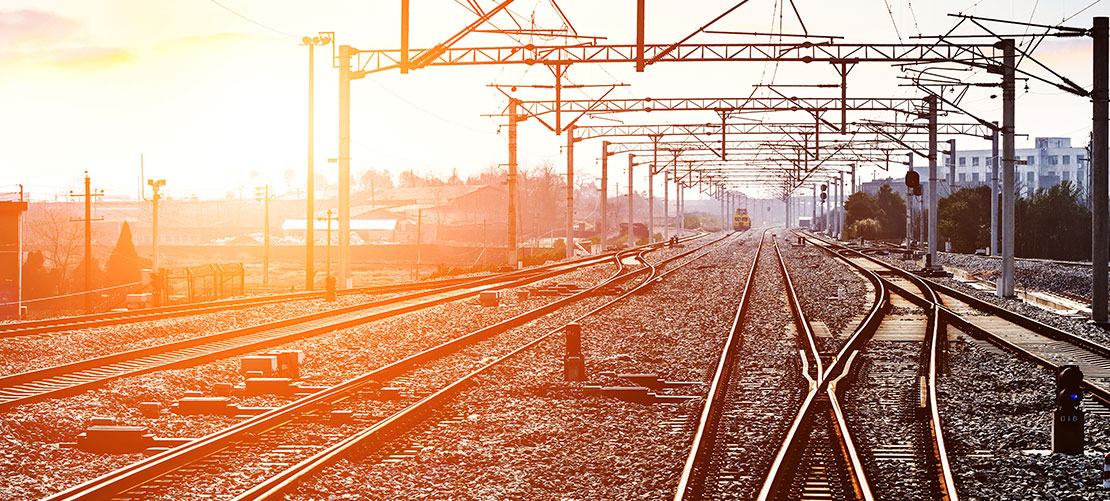Encouraging modal shift by making the railway attractive to passengers

Caroline Hooton and Darren Fodey explore different techniques to help move people back onto the railway and away from their cars.
Ever since the Liverpool and Manchester railway opened in 1830, rail operators have grappled with the issue of how to get more freight and more people to use the railway. The rise of the motorcar during the 20th century made this all-the-more pressing as mass production and general economic prosperity made cars more affordable – but at an environmental cost. Government policy – with a preference for low spending and perceived easy returns - turned towards roads and away from investment in rail. The result was that passenger miles first stagnated, and then declined, from the 1950s through to rail privatisation.
Pre-pandemic, rail passenger journeys had more than doubled compared with the position on privatisation. Certainly, investment in rolling stock renewal – including investment in on-board facilities such as Wi-Fi – and station spaces improved the passenger experience, while slick advertising campaigns emphasising the benefits of intercity travel by rail and booking early helped to tempt people back to the network. Even so, there was much still to be done: Transport Focus observed in its April 2019 submission to the Williams Rail Review that rail trips still only accounted for two per cent of all trips made in England and just eight per cent of distance travelled.
One of the key planks in the current Government’s climate change agenda is to encourage a shift to public transportation. Indeed, the Department for Transport’s 4 March 2020 paper ‘Decarbonising Transport: Setting The Challenge' specifically identified rail travel as a more environmentally friendly alternative to car use and “one of the most efficient ways of moving high volumes of people into city centres and moving people over long distances”. Unfortunately, three weeks after its publication the United Kingdom went into lockdown to tackle Covid-19. The Government told people to stay at home wherever possible and avoid public transport except for essential travel, with the result that passenger numbers fell by 70% and there was a relative uptick in private car usage.
Fortunately, as the vaccine rollout continues apace, there appears to be light at the end of the tunnel. On 28 March 2021, the Government’s ‘stay at home’ rule ended – although people were still advised to work from home where they could and minimise their journeys – while 12 April 2021 marked the re-opening of non-essential retail. We are already starting to see signs of shifting demand, with more people travelling at weekends and train services ramping up to meet demand.
There will inevitably be bumps on the way as the Government implements its roadmap to remove all legal restrictions on social contact by 21 June 2021. However, as we slowly emerge from the COVID-19 pandemic there is a real opportunity now to delivery better value to the taxpayer from the railway by finally placing passengers at the heart of the industry in order to encourage a modal shift that helps decarbonise the U.K. economy. So how can this be achieved?
Government messaging and regulation
How do we start working towards decarbonisation and move people back onto the railway and away from their cars? An 'easy win' that can be achieved is for the Department for Transport to run a public information campaign telling people that it is safe to get back on trains. Such a campaign should emphasise the safety measures carried out on trains and in stations, such as increased cleaning and the changes to service timetables to support those passengers who are able to journey into work outside peak journey times. It could be run alongside existing Government messaging encouraging the wearing of facemasks unless exempt, maintaining a distance from others where possible and carrying hand sanitiser.
If the Government is serious about getting people back into offices and life returning to some kind of normality, then it is important people have trust in rail as a travel option. Trust is a message which came out from many respondents to the Williams Review – it’s an area the industry needs to do better. Here though, it is incumbent on the government to make clear to people that rail is safe to use. Such a campaign could also emphasise both the ‘green’ benefits of rail travel over a road commute, especially as roads become more congested and increase journey times. The ‘hassle-free’ benefits of point-to-point transport that does not involve looking and paying for parking, while also providing time for leisure pursuits like reading or streaming music or videos, are also key advantages. If any benefit can be said to have come from the pandemic it is that many people noticed the improvement in air quality as fewer vehicles were on the roads.
The Government is in a unique position to lead. Its existing press briefings and current TV and newspaper campaigns on the need to abide by COVID-19 precautionary measures offer a reach far beyond what train operators or local transport authorities could achieve. It also benefits from having a degree of authority that the public notes and, certainly, news footage of Ministers taking trains would provide a degree of reassurance.
The Government can also back up its messaging with regulation. On 12 April 2021 the French parliament voted to suspend domestic airline flights on routes that could be travelled by train in under two and a half hours. Although this represents a watering down of initial French Government proposals and connecting flights are exempt, it nevertheless represents a real commitment by France to meeting its climate change obligations and follows on from a 2020 ban introduced by the Austrian government on domestic flights where a train could make the same journey in under three hours.
There may be economic benefits to the UK Government introducing similar legislation here – albeit the train journey times would need to be of longer duration than two and a half hours to capture journeys like London to Newcastle or Manchester to Edinburgh – given that it has already taken on revenue risk under the existing Emergency Recovery Measures Agreements and appears likely to retain it under the forthcoming National Rail Contracts. Although admittedly more stick than carrot, pushing people onto trains could reduce the cost to the public purse, especially if coupled with the Austrian approach of also imposing additional taxes on domestic flights over a set distance. It would also send a clear signal of the Government’s commitment to tackling climate change.
Commuting
It remains to be seen what long-term impact Covid-19 will have on office working and commuting patterns but, even pre-pandemic, concerns were being raised about falling commuter numbers as businesses explored options for working from home and flexible working. What is certain is that with many businesses and employees now realising that some roles can be performed remotely on either a full or part-time basis, there will be a reduced need for people to be in the office. This has two impacts on rail service provision, which in turn offer opportunities:
- The end of traditional peak time services in the long term. If fewer commuters require peak time services then there is an opportunity for more flexibility for train services over the working day. This could in turn reduce pressure on lines and free up capacity for alternative services beyond the commuter belt, while also offering increased opportunities for carrying out planned maintenance and replacement work on infrastructure. In addition, as we saw during 2020, thinning out services during the day would improve punctuality, which would in turn improve passenger perceptions about the efficiency of rail travel. In the short-term peak services will need to remain, partly as the industry will need to carry out assessments of workplace changes on passenger numbers, and also because increased services will reduce crowding on trains, which will provide more reassurance to the public that trains are safe to use. However, the dynamism that rail operators had to demonstrate with timetabling during the pandemic demonstrates that flexibility is possible and could also be a means of addressing passenger demands going forward.
- The need to adapt season ticketing. If work patterns do change as anticipated then it is unlikely that demand will continue for the traditional annual season ticket bought in advance, and even seven-day and monthly tickets may not offer the flexibility that commuters require. Part-time travel cards that enable employees to take advantage of season ticket loan schemes, carnets and daily ticket pay-as-you-go fare caps analogous to those run by Transport for London may well offer commuters across the United Kingdom the flexibility they seek to meet their new work/office routines.
Fares
Along with the future of season ticketing lies the wider issue of fares generally. The number one complaint that comes up in passenger surveys is that rail tickets are expensive and complicated. Pre-pandemic a cottage industry of websites existed explaining how purchasing different types of tickets could offer cheaper outcomes for passengers. Media coverage of the issue was scathing. The public will always say that they want tickets to be cheaper but with revenue risk currently sitting with the Government, it is unlikely that a ‘magic money tree’ will spring up to grant this wish. However, the ongoing Williams Review has made it known that it is taking a serious look at ticket flexibility and fares reform, and much could be achieved by simplifying the system and making it easy to understand.
Rail companies were already making moves to improve the ticketing experience pre-pandemic through initiatives such as improving their ticketing websites and apps, and introducing smart ticketing, mobile phone electronic ticketing and touch-in-touch-out pay-as-you-go initiatives. Certainly the way in which people – especially the more tech savvy younger generations – want to pay for and carry tickets has changed, and this needs to be met, but should not come at the expense of those who prefer paper tickets or who lack internet or smart phone connectivity.
Ultimately, the public wants to know that it is paying a fair and reasonable amount for a ticket, that pricing is consistent and cannot be ‘gamed’ and that for longer journeys, the ticket will guarantee them a seat on the train. Following the rise of low cost air travel, airlines learnt that clear ticketing segmentation was popular among passengers, from offering ‘no frills’ basic fares where passengers could bolt on additional services to more expensive, fully flexible fares that included more services and offered more flexibility. The rail industry now has the opportunity to examine whether equivalent simplicity can be brought to its ticketing arrangements.
Joined up public transport
Another key gripe that the public has about public transport in general is that bus, tram and rail timetables do not always mesh and can result in long waits between journey segments, adding to the perception that public transport is time consuming and complicated. Some regions intend to tackle this head on, for example on 25 March 2021, Andy Burnham announced that the Greater Manchester Combined Authority would implement bus franchising to exercise control over bus fares, timetables and routes and integrate ticketing across buses, trains and trams in the region. With other regions, including Liverpool, looking at doing the same there is a lot of scope here for regional authorities to meet the differing transport needs of their respective communities.
However, as with any public sector initiative, it takes time to implement changes of this type given that lengthy consultations are often necessary. To the extent that train operators have parent companies that also own local bus operations, there may therefore be scope to investigate a voluntary join up of services to provide a more fluid local transport experience. This is not without its challenges – change will need to be negotiated with councils and some regions may face competition concerns, but given that the public repeatedly identifies affordability and frequency as key concerns when asked what it wants from public transport, there could be benefits to train operators exploring the same.
Conclusion
If the Government is to meet its climate change commitments, then there has to be a real commitment to persuading people to shift from cars and airplanes onto rail and buses through a combination of making the railway more straightforward and attractive to use, while also making domestic air travel more expensive. The post-pandemic environment offers an opportunity for a realignment of the rail industry to focus on meeting passenger demands while also delivering on the Government’s commitment to net-zero carbon emissions by 2050. For years now, rail companies and the Government have talked-the-talk about putting passengers at the heart of the rail industry. Well, now is the time to walk-the-walk.
This article was first published in the June 2021 edition of Rail Professional; it can be found here.



